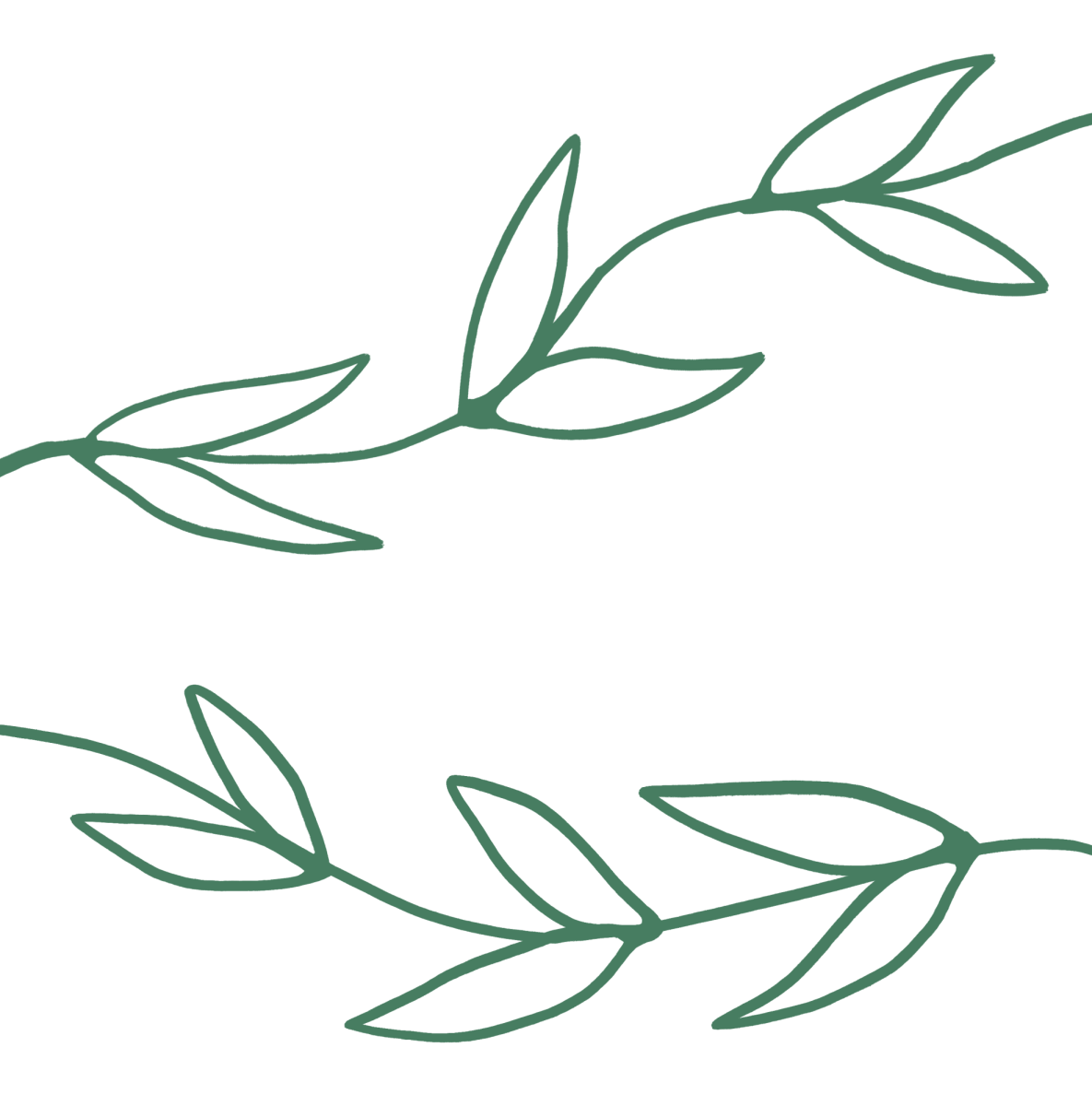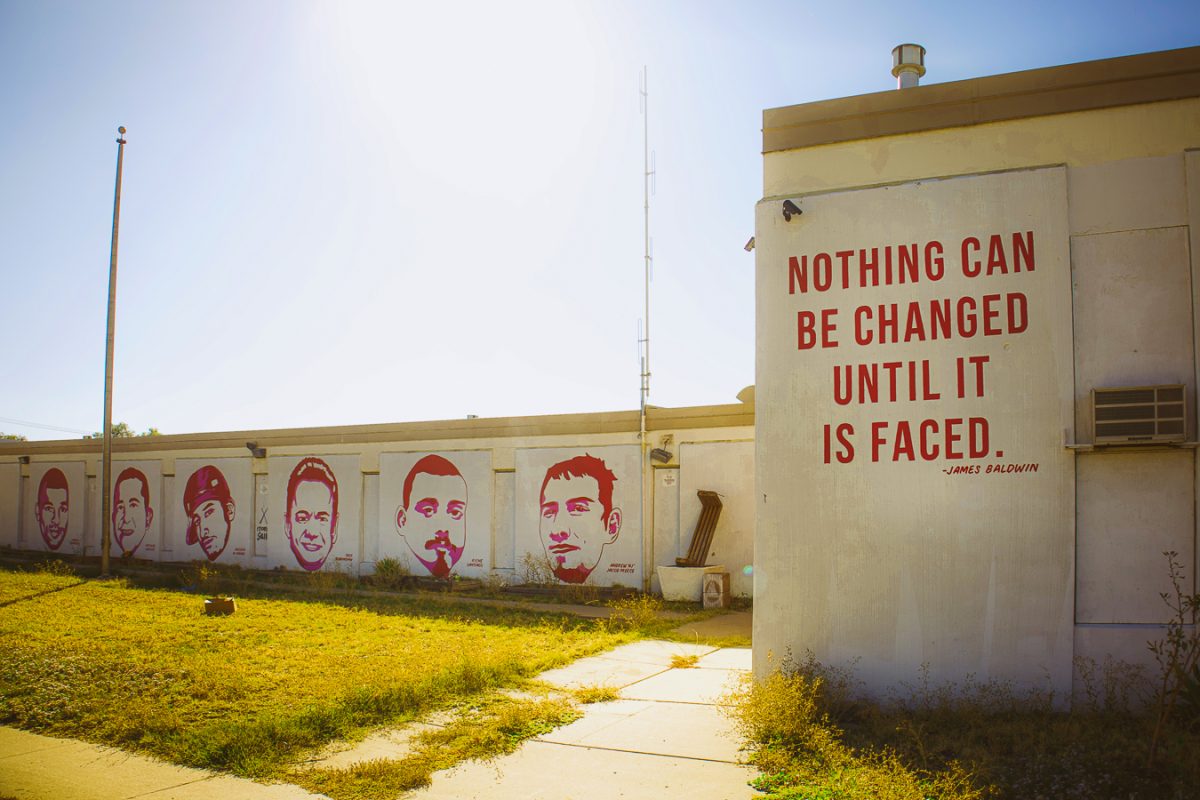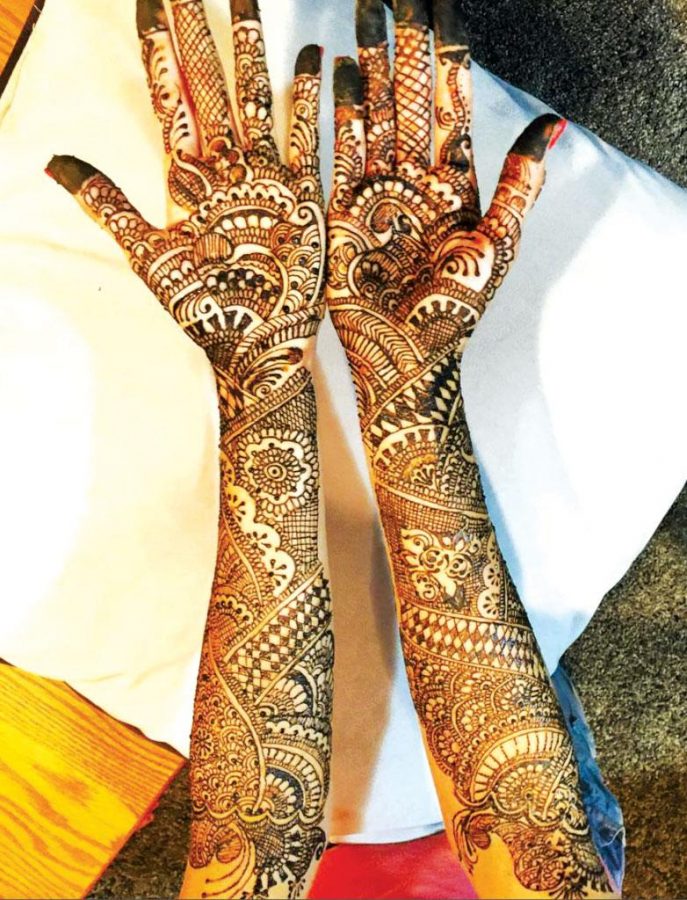Mehndi is a long-standing cultural staple in India. It’s more than decoration or the newest fad. It’s so deeply embedded in the culture that it has become tradition. If you’re not sure what mehndi is, this is because you know it for its Americanized name: henna. You may be more than familiar with the trend, the varying orange-hued tints that color the hands of teenage girls (for the most part). Perhaps you’ve even complimented someone’s henna, pointing out the intricacies of their design. The Americanization of the tradition of applying mehndi is a true shame — instead of sharing something from another culture, it has become one of the most common forms of cultural appropriation in today’s society.
The origin of mehndi is uncertain. Some scholars believe that mehndi was first introduced to Asia by the Mughals during their rule in the 16th and 17th centuries. Others say that mehndi came from the Egyptians. The craft was initially reserved for those who were royalty or rich, but as it spread across the continent, more and more aspiring artists adopted the practice.
The most well-known use of mehndi is for Indian weddings. The mehndi ceremony is something which is meant for the bride and all the ladies of the family to share with one another. It’s organized and hosted by the bride’s family with the hope of spreading auspiciousness and positive health for the bride in her new life to come. This ceremony is to be held the day before the wedding if possible so that the prosperity spreads quickly. The paste goes on both the hands and the feet of the bride, meant to cover her up to her elbows and calves.
Creating the actual design for a bride is time-consuming because the design is extremely intricate. Usually, one or several artists are dedicated to getting the bride ready. Somewhere in the design, an artist can hide the groom’s name or initials for him to find. If the groom does so, it’s considered auspicious. After the mehndi is applied, artists wait for the paste to dry before lightly dampening the paste with lemon juice so that the tint comes out darker. Tradition states that the darker a bride’s tint is, the more her husband will love her in their married life.
Although this is the most popular usage of mehndi, it’s used for several other purposes as well. The mehndi paste is known for its medicinal properties, primarily its ability cool someone’s body. One reason Indian brides wear mehndi is to calm the bride’s stress by physically cooling the body. A wedding can be stressful for any bride, but Indian weddings are especially elaborate and lengthy. Mehndi is also a natural sunblock. Historically, it’s been recorded to have further medicinal purposes for skin ailments, headaches and other medical issues.
The paste can be used as a natural hair dye, nail tint and ingredient in cosmetic products as well. In short, there’s a lot of history behind the ceremonies and the application of mehndi. It’s not a simple tool of decoration for Indians, which is why the American adoption of the art is disrespectful at times.
Spreading art makes others aware of it, no matter how far they are from the origin of the art form. Yet there’s still a certain amount of knowledge that art consumers or fad-lovers should have. America’s adoption of using mehndi for body art, pregnancy art and for other forms of decoration is an example of why it’s important to learn about traditions. As an Indian-American, I can’t tell you how many times I’ve resisted the urge to ask people if they know the meaning behind the pretty designs on their body. In a sense, wearing mehndi for festivals like Coachella to fit the “look” is like dressing up as a Native American for Halloween. It’s disrespectful and it belittles the art’s true meaning. Simply put, it’s appropriation.
This isn’t to say anyone other than Indians should be banned from using mehndi, but it’s important to be educated about what you use. You wouldn’t walk into a museum without reading the information blurbs next to the exhibits. You wouldn’t wear makeup without learning the difference between foundation and eyeshadow. The same principle should apply to any form of art from another culture.
Pooja Shah, a local Indian-American henna artist agrees with this sentiment. “It does bring some pain to see that mehndi is used as an art form. Especially when others don’t see the cultural significance. Personally, as an artist, I have always seen art in a way that the artist can choose what they wish to do with it. An awareness of cultural significance is important, but so is the art itself. I always try to spread my personal knowledge any time I am given the chance while doing mehndi.”
American adaptation of the art takes away from artists like Pooja, who have a personal connection with their art.
“Mehndi is also one of the largest traditions in India, which brings me closer to my culture being so far away from it. It’s natural, herbal and cultural all in one. When I apply mehndi to others it brings contentment and presence of culture to me. The art takes time and precision, which in turn brings peace and concentration to me,” Shah said.
Without proper education about mehndi, it becomes another cultural tradition melded into Western culture. When something is as rich in tradition as mehndi is, it should be respected. It should be appreciated. Awareness is something to practice in as many areas of interest in life as possible, but perhaps it is most important in issues regarding others’ cultures.
How can we truly appreciate any art form? By learning about its history and sharing it with others. In a digital age like ours, it’s easy to find a history of just about anything. Be aware of your surroundings, of the people and cultures around you and of what their traditions signify. Remember that behind every art form are hundreds, even thousands, of artists like Pooja Shah. It’s an injustice to them if you don’t take the time to learn about their craft – something that has been passed down through generations. Start simply. Call the art by its true name, mehndi. Not henna.























Ali Ali Hassan • Aug 9, 2021 at 10:42 am
To improve this article I suggest the author take the time to research.
1) Why the term Henna is used in English? Could there be a long history of English contact with henna through the Middle East that the author is eliding over?
2) Is the term Henna used in South Asia? Is there a more complex history of henna/mehndi in South Asia that the author is ignoring in favor of a homogenizing North Indian Hindu nationalist interpretation?
Ali • Aug 9, 2021 at 10:40 am
Hi,
In South Asia henna is also a name used for this. Check any dictionary of any Indian language. Henna is by far the more inclusive term. Henna is also the term through which this term entered the English language. To insist that mehndi is the only correct term for this tradition is North Indian Brahmin chauvinsim, end of story.